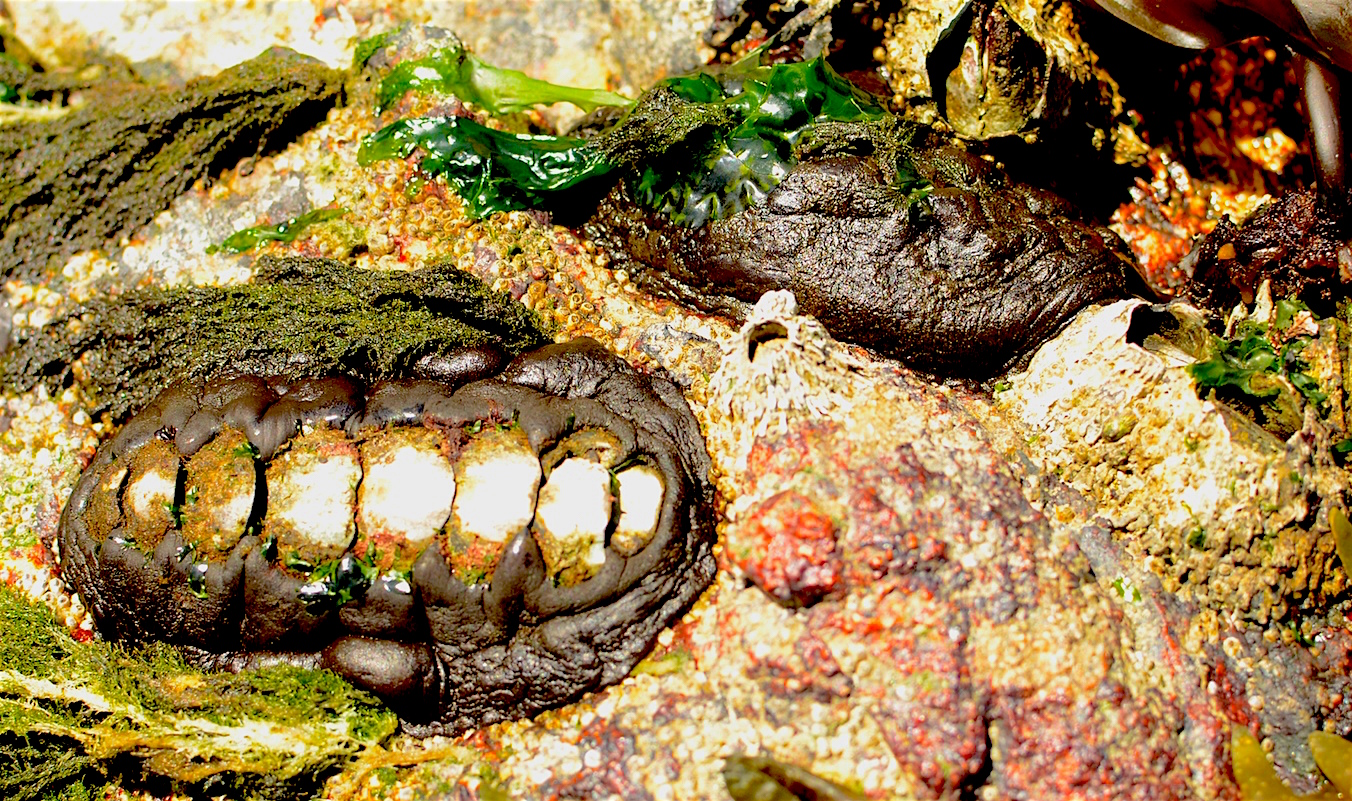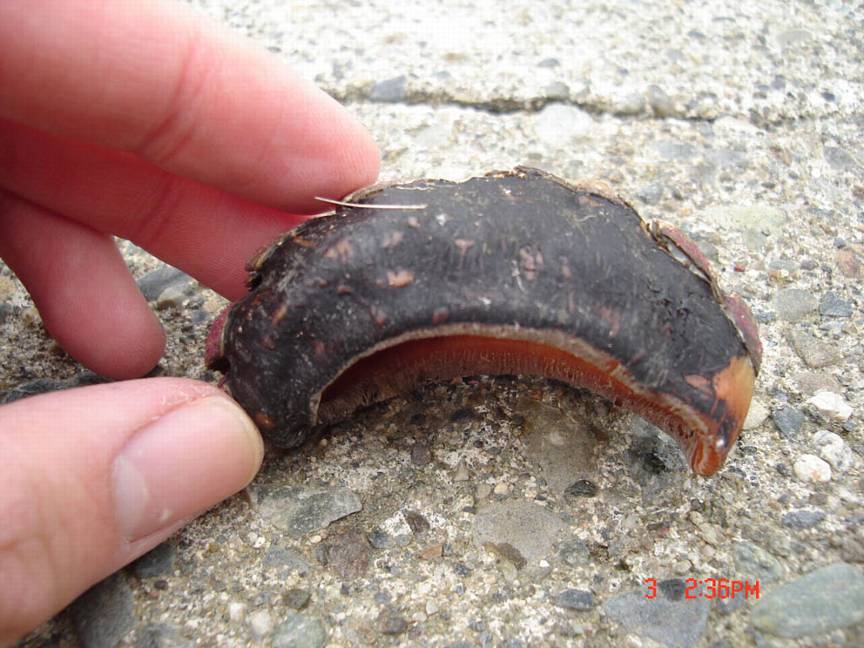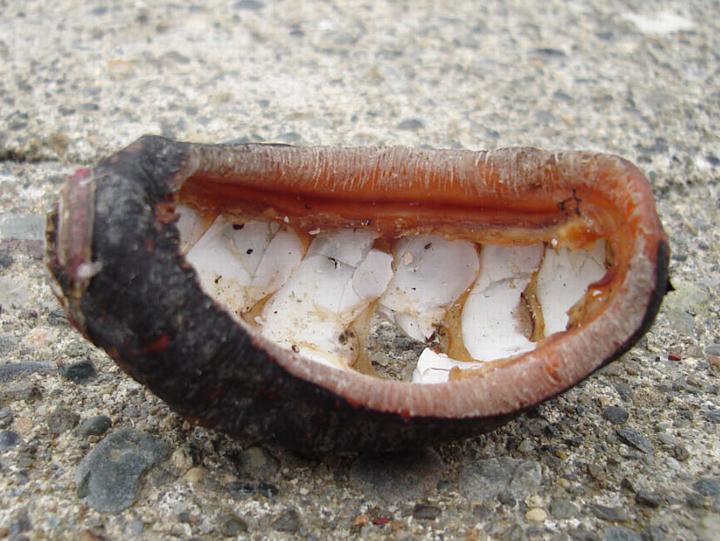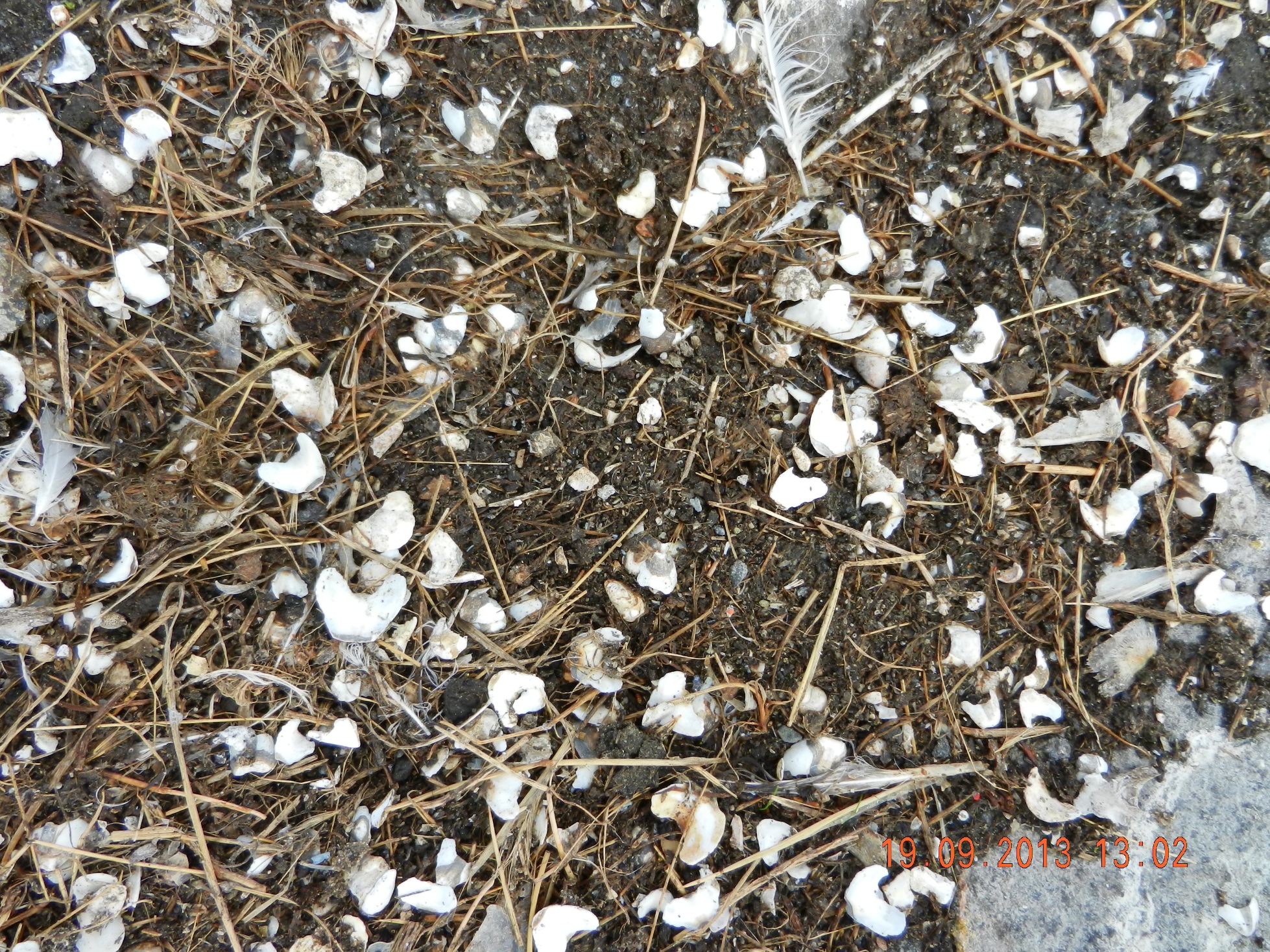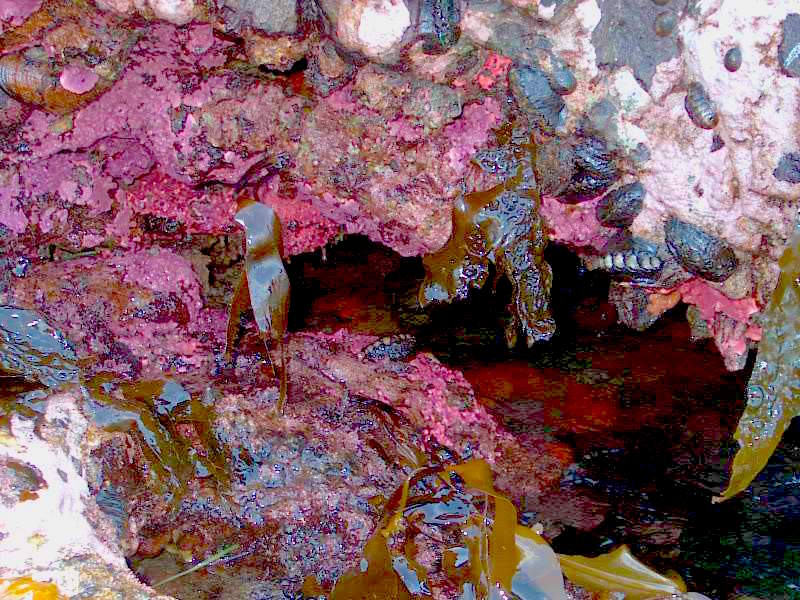- The side view of a Kathariina tunicatachiton
- the ventral side showing the foot and mantle. compared with the ventral side of a limpet.
- The inside view of a leather chiton after the soft partshave been eaten by an Oystercatcher.
- Chiton shells where black oystercatchers deposit the remains.
- Habitat of Katharina exposed at low tide.
The black oystercatcher is the main predator of the leather chitons. at Race Rocks. We find chitons occuring abundantly in the lower intertidal zone . In the picture above they are located above a small cave in the intertidal zone on the West shore of Great Race. In order to withstand the heavy impact of waves and swell, they are able to clamp onto the rock tightly.
Description:
Chitons are marine molluscs with oval shapes and shells divided into eight dorsal plates. The chiton Katharina lives in the medium intertidal region at Race Rocks. It is very abundant on the north and west shores of Great Race Rock.
Color:
Body to 12 cm long, elongate-oval ; all chevron-shaped shells are deeply embedded in girdle, exposed only in mid-dorsal area. The interior of valves is whiteas visible above. The girdle is thick and shiny, like black leather.
Life history:
Katharina feed on brown and red algae and on benthic diatoms which it rasps from the rocks. Young animals isolated in pools grow to a length of 15 mm in 1 year and 55 mm in 3 years. They reach sexual maturity at a weight of 4 gms (33-36mm). Spawning takes place from March to July depending on latitude, with the later spawning occuring in colder regions. The eggs are green and the life span seems to be about 3 years.
Classification:
Domain Eukarya
Kingdom Animalia
Phylum Mollusca
Class Polyplacophora
Genus Katharina
Species tunicata
Common name: Leather Chiton
Other Members of the Phylum Mollusca at Race Rocks.
and Image File |
 The Race Rocks taxonomy is a collaborative venture originally started with the Biology and Environmental Systems students of Lester Pearson College UWC. It now also has contributions added by Faculty, Staff, Volunteers and Observers on the remote control webcams. Original by Hameeduddin Mehri (PC yr 29) The Race Rocks taxonomy is a collaborative venture originally started with the Biology and Environmental Systems students of Lester Pearson College UWC. It now also has contributions added by Faculty, Staff, Volunteers and Observers on the remote control webcams. Original by Hameeduddin Mehri (PC yr 29) |

